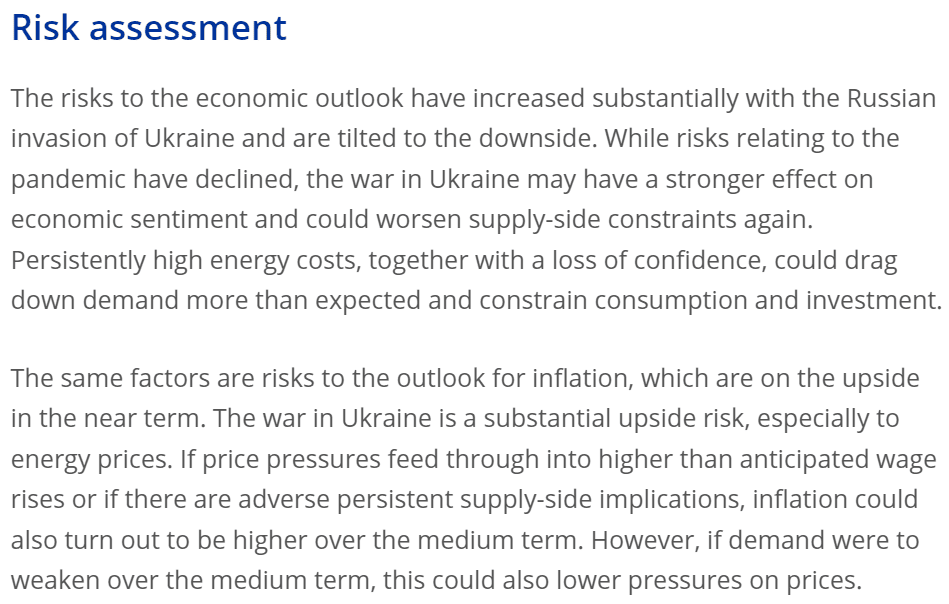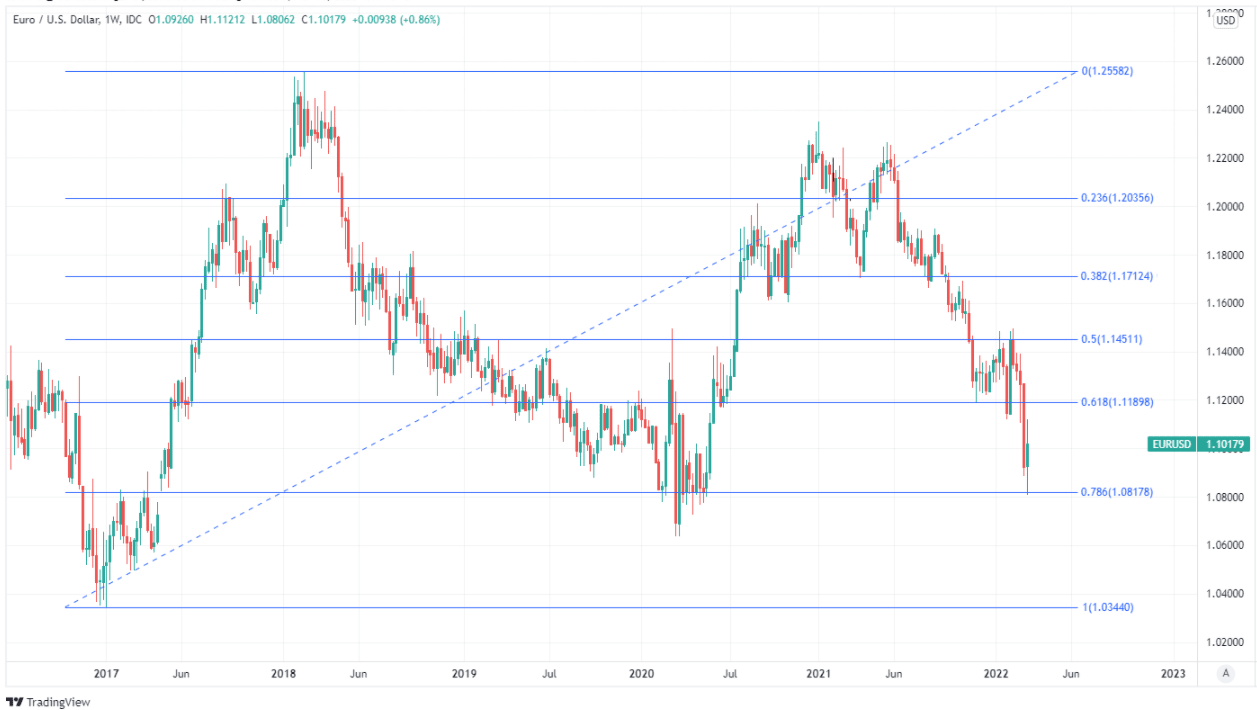Euro / Dollar Backstopped by ECB’s “Conditional” Steps Forward
- Written by: James Skinner
-
- EUR/USD underpinned by ECB’s policy stance
- Takes “conditional” step toward normalisation
- Glimpsing victory in battle with CPI disinflation
- After EZ CPI expectations re-anchor at target
- But Russian war on Ukraine casts long shadow
- Threatens economy, poses upside inflation risk
- All GDP forecasts cut, with risks on downside

Image © European Union, reproduced under CC licensing
The Euro to Dollar exchange rate could find itself better supported going forward after the European Central Bank (ECB) announced further “conditional” steps it intends to take on the path toward monetary policy normalisation, which may even pose upside risks for the single currency in the weeks and months ahead.
President Christine Lagarde said Thursday that all members of the ECB’s Governing Council rallied behind proposals put forward by chief economist Philip Lane at the March monetary policy meeting, ultimately leading the bank to take another step toward a normalised monetary policy.
The ECB plans to reduce to €20BN from June the amount of monthly purchases carried out under its original quantitative easing programme, known as the Asset Purchase Programme, which is earlier than the October date that was announced back in December.
It will also push ahead with December’s plan to discontinue its €1.85 trillion Pandemic Emergency Purchase Programme at the end of March after ECB staff made further steep upward revisions to their forecasts for inflation, which is now expected to average 5.1 per cent for 2022 before dropping to 2.1 per cent in 2023 and 1.9 per cent in 2024.
“Accelerating normalisation? That was not the decision that was made today. The decision that was made was to progress step-by-step. To acknowledge the added uncertainty that we are facing and to, therefore, have added optionalities so that we can in all circumstances respond in an agile way. You will have noted that our decision in relation to asset purchases under the APP is conditional,” President Christine Lagarde told the press conference.
Source: ECB Monetary Policy Statement.
- EUR/USD reference rates at publication:
Spot: 1.1020 - High street bank rates (indicative band): 1.0634-1.0711
- Payment specialist rates (indicative band): 1.0920-1.0965
- Find out more about market-beating rates and service, here
- Set up an exchange rate alert, here
“If the data - which are critically important because we are data dependent in our decisions - do not support this medium-term outlook as we see it now then we indicate very clearly in our monetary policy statement that I have just read that the governing council stands ready to revise both in terms of timeline and in terms of volume, its purchases. So it is a conditional provision that you see in our decision,” she added.
While the ECB announced significant upgrades to forecasts for inflation - which had been 3.2 percent for 2022, 1.8 percent for 2023 and 1.8 percent for 2024 back in December - the bank also cut all of its GDP forecasts while President Lagarde emphasised that risks to these are all on the downside.
Russia’s ongoing invasion of Ukraine means there are two scenarios for the Eurozone economy going forward and each entails significant risks to growth, which arise from the inflationary impact of rising oil and gas prices and the effect these could have on companies’ and households’ incomes.
“In all those scenarios the medium-term inflation outlook arrives roughly at target,” President Lagarde emphasised in the press conference.
{wbamp-hide start}
{wbamp-hide end}{wbamp-show start}{wbamp-show end}
“What we are doing is confirming our step-by-step approach and our maximum optionalities in the face of maximum uncertainty, but also delivering on our mandate, which is price stability,” she also said.
The ECB said in its monetary policy decision and President Lagarde reiterated with emphasis at the subsequent press conference that the bank will do “whatever it takes” to achieve price stability, which is the Frankfurt-based institution’s official mandate.
This and the risk of further steep increases in inflation, particularly in the short-term, is why President Lagarde went to great lengths on Thursday to outline the importance of the ECB having “maximum optionality” when making its policy decisions.
“I’ll be happy to expand a little bit because this is clearly what has guided us. Added uncertainties, added optionalities. So what are we doing? We are clearly identifying the pace so that we are procuring a situation where we can decide some time after the end of net asset purchases what decision we should make in relation to rates,” President Lagarde said of the step-by-step sequence of the ECB’s envisaged normalisation of its monetary policy.
Above: Euro to Dollar rate shown at weekly intervals with Fibonacci retracements of 2017 recovery indicating various areas of medium-term technical support for the Euro.
Secure a retail exchange rate that is between 3-5% stronger than offered by leading banks, learn more.
In sum the ECB has formally opened the door to the prospect of its quantitative easing programmes being ended within the current year and even broached the subject of an initial increase in its benchmark interest rates at an unspecified time, one of which has been set at -0.5% since 2016.
An initial interest rate rise would not be announced until “some time after” the envisaged end of Asset Purchase Programme in June, however.
“Some time after is a substitute to ‘shortly before’ and obviously ‘some time after’ is an open time horizon which will be data dependent,” President Lagarde said of the phraseology on Thursday.
Previously, when asked about the likely timing of any interest rate rise, President Lagarde had either ruled out the question for this year or declined to provide any guidance at all.
However, Thursday’s press conference made clear that everything depends on the kinds of inflation and economic growth numbers that emerge from the Eurozone in the months ahead, while also clearly acknowledging that the era of negative interest rates in Europe is closer to ending than it’s ever been.
That in and of itself is a significant shift in the fundamental backdrop for the European single currency, which has fallen significantly against the Dollar and others through the years since June 2014 when the ECB first cut its deposit rate below zero.







